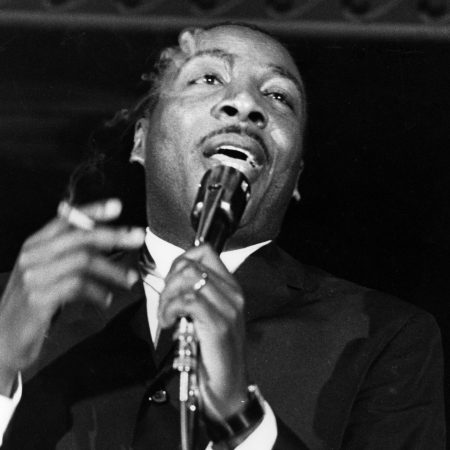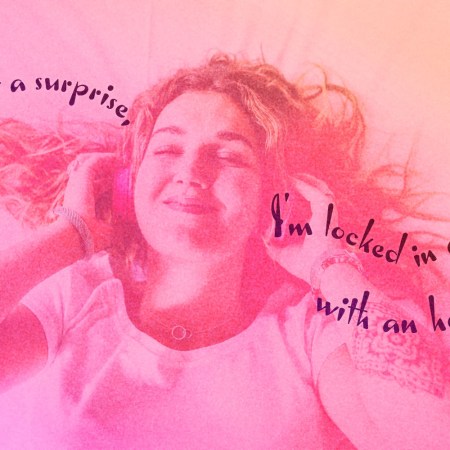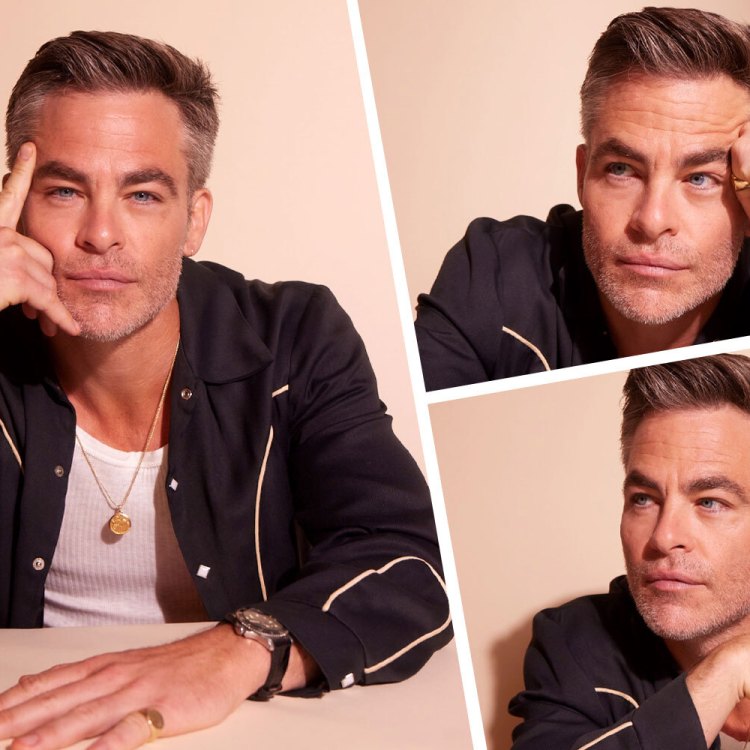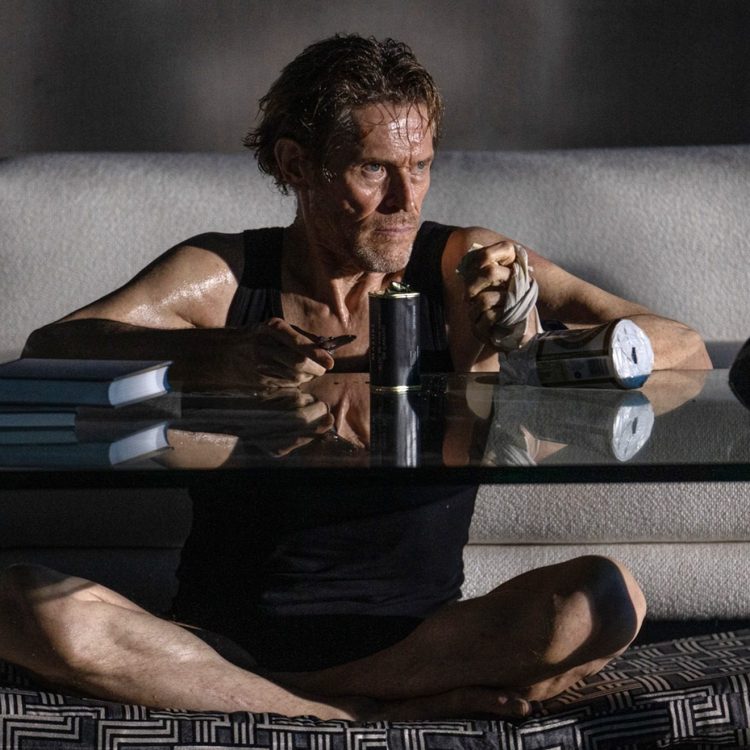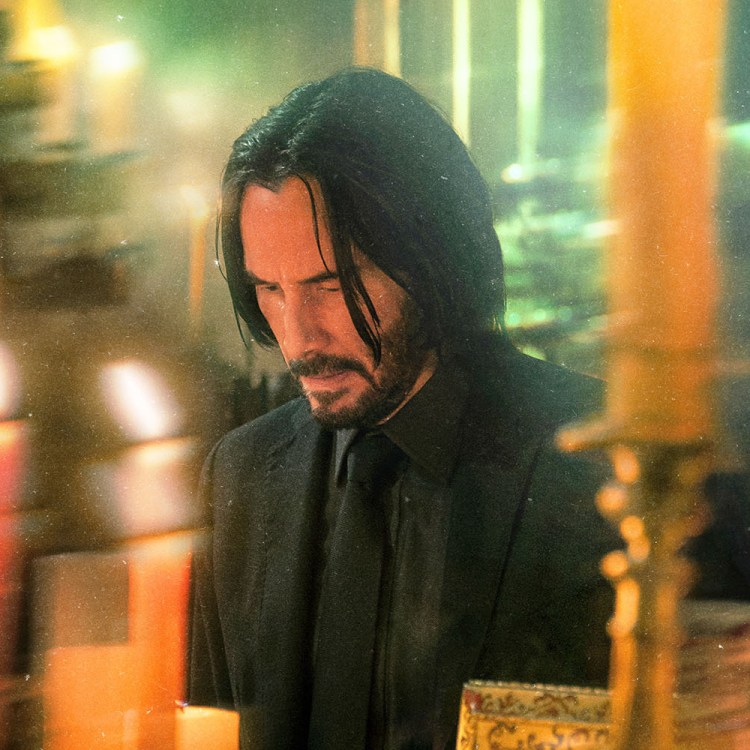Johnny Flynn knew as soon as he read the script for The Outfit, the recently released thriller about a Chicago-based bespoke tailor and his unsavory clients, that he wanted to be a part of it. Playing opposite his longtime friend Mark Rylance, Flynn says he enjoyed the theater-like quality of the film, which is set entirely in a single tailoring shop — and the camaraderie that came along with that among the cast and crew.
For Flynn, The Outfit’s draw was its likeness to classic movies like the noir dramas he grew up on and loves. Everything from the costuming to the music in the film feels authentically old Hollywood, and Flynn’s work on the film is no exception. And after years of a pandemic morphing the way we all work and relate to each other, even on movie sets, Flynn says the closeness of The Outfit’s cast was a welcome experience.
We caught up with the actor to talk about how he prepared for the role, what viewers can (or can’t) expect from it and a movie night at Mark Rylance’s house (where he has a pool table in his kitchen).
InsideHook: Talk to me a little bit about your first impressions of the script and your character.
Johnny Flynn: Some things you read once and you’re like, “I think this is good. I don’t know.” You go back to it and you find things that you’re like, “Oh, I missed that and okay, I can see how this might be developed into something interesting.” But this script, I read it and was immediately like, “Oh my God, I’ll do anything to be in this film.” I was completely hooked on the story.
I grew up watching a lot of tight, old kind of thrillers and war era movies from America like Hitchcock. I think we made this in like February, March 2021 and we’d been through a year of, or nearly a year of pandemic times and it was hard. I had been on movies where it was just like hard to logistically kind of move through what we were trying to do and create a world that felt real despite this big elephant, huge elephant in the room and everyone wearing masks and stuff. I knew this was, A, something written before the pandemic, but B, as I read it, I knew it was going to be set in one location with a very limited amount of crew and actors and people. I was so hungry for a kind of communal experience, and I was reading with that in mind and thinking about all those movies that I love, that could also be brilliant plays set on a stage and almost in like one or two locations. Yeah. It felt like one of those kinds of stories, and so I just loved it basically.
It really is intensely a character study because it does come down to just those people in that room. Is there anything in particular that you do when you know something like this is the project?
I think we all had such faith in the script. The script is so good. The way the script works is that it’s a privilege to stay in one room rather than a bind. You never want to leave that space because the most interesting things and the most interesting people are passing through there and the information that comes in you’re like, “I don’t care about the gang warfare going on over there. I want to see what’s happening with Leonard and the suitcase and the thing.”
We went over to Mark’s house actually one evening on a weekend during the shoot and watched, I think it’s a film called Concrete Jungle, old film noir. It was so sweet. Him and Claire had me and Dylan and Zoe over for dinner, and Claire cooked an amazing meal and we shot pool and Mark has a pool table in his kitchen. I’ve known Mark for years because I did theater with him years ago and stayed friends with him, and I just love him so much. He puts so much into everything that he does, and I feel like anything that he works on, he brings so much gentle, curious kind of wisdom to. So in terms of creating the atmosphere that we needed, that was authentic and everything, he was leading the charge and he was suggesting movies that he’d seen and asking us what we were doing.
I just get really geeky and excited when somebody like that is leading the fray. I was watching movies like Night of the Hunter and talking about particular actors’ performances that really rest on a lot of stillness, which is a powerful force, a certain type of stillness. That’s a powerful force when you’re using one location, one room and just trusting in the lighting, trusting in Dick’s photography and the beautiful set and your fellow actors and just all the elements felt very strong. I was able to really just trust everything. It’s like the opposite of a Marvel movie or something.
It’s all in camera. The bits of like blood and gore, we had these amazing prosthetic teams in to do that stuff. It’s all just 100% real and we choreographed the gunfights and it was so cool to do it. Coming from theater as well, I do trust that thing of delivering a story from one angle, one space and I know that it can be very powerful and if you lean into it really and trust it. Yeah, that was great.
I didn’t really even notice until it ended that we never left the tailoring shop.
Yeah. I think that was something that people talked about when we had a decent amount of rehearsal, which for a relatively small film and a short-ish shoot, having whatever we had a week or 10 days or something to rehearse, it was just amazing. That never happens. And Jonathan and Graham said, “If this works, we won’t realize that we’ve been in one space.” And it’s true, I think. I’ve spoken to some people who’ve seen it, who are surprised when I’m like, “You know it’s just one stage.” Like, “Oh yeah.” But I think the thing of it feeling authentic to the period as well is, the movies from that era, we didn’t have the effects and the stuff that we have now, which I think is maybe lent on for my taste too heavily.
I think the craft of just carving out a beautifully written scene is undervalued and this is something that, this is a movie that reminds us that that’s a great thing to do, basically.
Did you know anything about tailoring coming into this? What did working on it teach you about that aspect of things?
I mean, I found it fascinating. I was grateful. I think anyone wearing nice suits in the ’50s would know a bit more about tailoring than I would, but luckily Francis isn’t a cutter or a tailor. Yeah, I got fascinated talking to the hat people from Locks and the designers about my suit and looking at pictures from there and learning. For me, working on anything in a certain period is just like, I’m such a history geek, and it’s a chance to dive into that time and to know the difference between trousers in the ’50 and…The way these things have evolved is just for me a pleasure and to kind of just piece bits of the jigsaw together, and so I loved that. I was just a very happy bystander watching Campbell work with Mark and watching Mark kind of get so into it, and in between takes, he’d go and do some sewing just to stay in the zone. So that, yeah, super cool.
When I talked to Campbell, he was talking about your suit, and he said they made your shoulders a little bit broader and there were little details in your costuming to imply a certain level of bravado. And I always find that really fascinating, how those little tiny details make such a difference in how a character is communicated on screen.
That’s something we talked about. I think when you have a limited palette, you’re trying to use everything that you can to… I mean, even like the angle that my hat was at and the difference between my suit and Rich’s suit. There’s small things that you can use, but that’s the beauty of costume and production design. Everything becomes a tool to tell a story, and you don’t know much about his past, but you start to think, “Well, because this happened and this happened, this old injury and da, da, da, and maybe the shoulders, my body’s like this, but to emphasize this aspect of Francis.”
So the tailoring is amazing for that and watching, looking at pictures of men from the era, whether it’s young Marlon Brando or Frank Sinatra, it’s quite interesting to think about the people that we sort of know about and the atmosphere we associate with them and then, oh yeah, it’s all subliminal. Yeah, they went for that kind of suit or that kind of hat, the brim was that wide or this… I think that would’ve been something that they probably talked about with their tailors at the time, but we now just think they look like… It’s a given. Marlon Brando is like that, but it was a considered thing, which is beautiful.
The fact that the film is just in that one room, it really lets all of those creative elements — the costuming, the script — it really lets them shine in a way that is really beautiful to watch.
I think it’s true. The designers and the various makers knew that this would be a fantastic kind of canvas for those things. And I’m so proud of how it all kind of shines out. I mean, I don’t have a right to be proud, but I’m proud to be a part of it. Yeah. I think it’s beautiful. I really do.
What would you tell people to expect from this movie?
I feel like in a way it’s a ride that you get on and you don’t need to know anything. It’s kind of nice in a way that you have no expectations because I think there’s a lot of surprising elements, given the limitations of a small cast and one set and everything. I really wouldn’t say anything. I think it’s so surprising, you start thinking it’s this thing and then it’s another thing and I think that’s the joy of it, is how the rug is constantly kind of pulled out. I would hesitate to say anything. I’d say, “Oh, it’s a nice film.”
Expect the rug pulled out from under you.
Yeah. Or not even.
This article was featured in the InsideHook newsletter. Sign up now.



